1950s Make Up – A look at Popular beauty brands from the era
Sunday March 10th 2013As in previous decades women took beauty inspiration from the big screen and the movie starlets of the decade, with the explosion of colour from the motion pictures in the 1950s women were now fully able to see the make up the stars were wearing and Technicolor showed up beautifully an array of cherry, fire engine red lips, warm bright blush and also the flawlessness of the skin. Women took this vibrant look and wore it day and night as a fashionable style of this period. Cosmetic brands were an important part of the process as now offering more choice than ever and more availability to the average housewife of the time. These cosmetic brands changed the face of the decade with the vibrant reds and cherries at the start of the decade and then with the addition of titanium to the products (added to mute the colour’s we see more of a peach, pinkish tones towards the latter. Cosmetics and cosmetic science was and still is bigger than ever as companies are always looking for ways to improve a product or adapt an old classic to coincide with current fashions and trends. Some of the brands available today have been working there magic for years, below is a look at the popular cosmetic brands of the 1950’s and how they play an important role in beauty history!
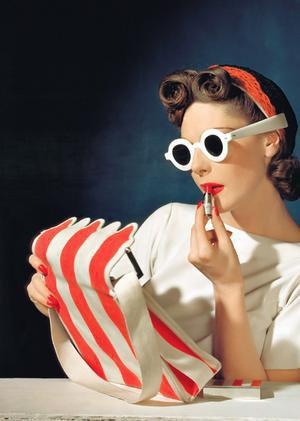
Max Factor in my opinion the most important brand in the history of cosmetics! Max Factor began experimenting with various compounds in an effort to develop a suitable make-up for the new film medium. By 1914 he had perfected the first ever cosmetic with this major achievement to his credit, Max Factor became the authority on cosmetics and an innovator of his time. The development of Technicolor film in the 1950’s required the company to develop a new line of products as its existing panchromatic make-up left a slight sheen on the skin that reflected surrounding colours. As a result of how bad they looked in colour many actors and actresses refused to appear in colour films Max Factor developed the pan stik that became was a desirable item both on and of the screen. In 1947 after 26 months of development by Max Factor, Jr., the company released "Pan-Stik"; it was released to the public in 1948 and was immediately commercially successful.
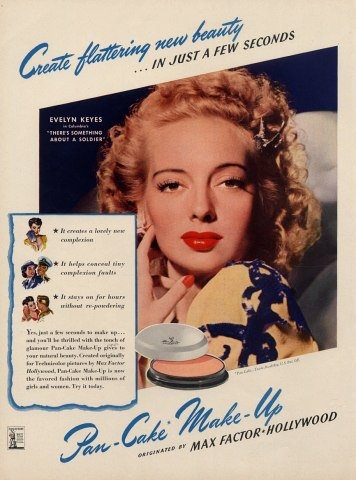
Estee Lauder began in 1946 in New York as primarily a skin care line with a hand full of products. Joseph Lauder and his wife Estee expanded and in the 1950’s was the first company to introduce the free sample and gift with purchase, giving away miniature lipsticks, rouges, eye shadows, and face creams. Today this plays a key role in our shopping experience and the companies marketing strategies.
Revlon was founded in 1932 by two brothers and a chemist, with just one product a nail enamel the company moved into stores and soon became a popular household name. In the 1950’s Revlon decided to start bringing out lipstick shades every six months rather than annually, so that women would think of lipstick as a shorter-lived product and buy it more frequently It was Revlon too that launched the most famous lipstick advertising campaign of the decade, a campaign entitled “Fire & Ice” that first ran in 1952 with a two-page, full-color spread featuring model Dorian Leigh on the first page. The brand also famously issued questions to its customers to ensure the lipstick they were choosing did indeed suit their personality as well as their face!!
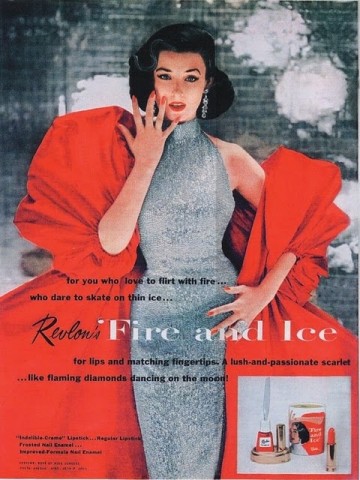
No7 Cosmetics was born in 1935 although properly relaunced (after seizing production during the war) in 1952. The brand was completely influenced by Hollywood and was the first brand to add a synthetic pearl pigment to its products giving it a shiny white effect.
Elizabeth Arden (née Florence Nightingale Graham) started her salon in 1910 on 5th Avenue in Manhattan. Her salon's signature was a bright red door, and the salon and her treatments soon became popular with the masses. The business expanded into a complete line of cosmetics, perfume this brand was popular in the 1950’s for it’s extensive range of lipsticks and matching nail polishes.
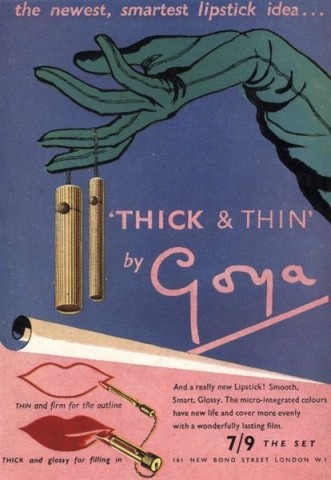
Rimmel began its life in 1824, when a teenage Eugene Rimmel became his father's apprentice at his newly opened perfumery in London. Eugene was an expert perfumer himself, and had a passion for cosmetics, at the age of 24 he opened up his own flagship store in Regent Street. When he died, in 1887, his two sons took over the business and it grew and grew. Rimmel played a key role in eye make up revolution in particular the mascaras, which flew off the shelves. In fact, the word 'rimmel' means mascara in many languages. The brand has changed hands numerous times since the Second World War and for the past 16 years it has been part of the fragrance company Coty Inc. The range is now sold in more than 40 countries and is Britain's best-selling cosmetics brand.
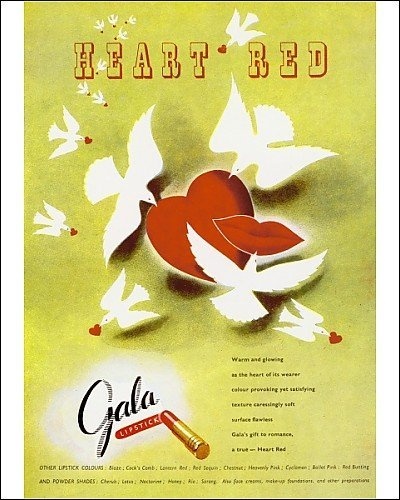
By the 1950’s cosmetics were a big business and advertising was a key role in the marketing of the products. Other important brands of the decade that sadly no longer continue to trade are Gala who added titanium to their lipsticks to give them a bright white appearance on application they also made a lot of mid tone colours in lipsticks. Goya was an important brand too as it was the first to develop the lip liner and offered a dual product for lipstick application. These beauty products were now also available for the masses and at the lower end of the price scale; Woolworths produced a more affordable lipstick line.
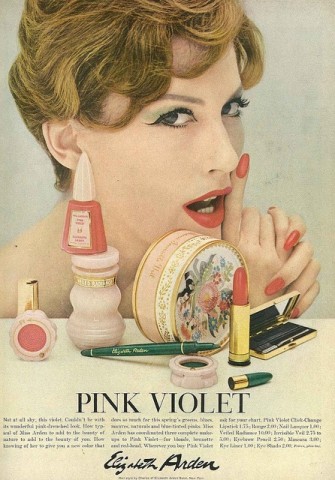
Amanda x
